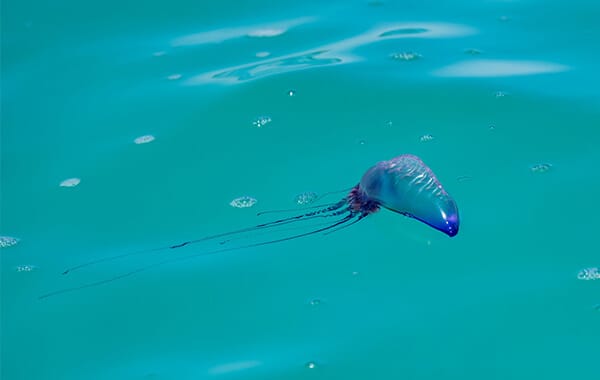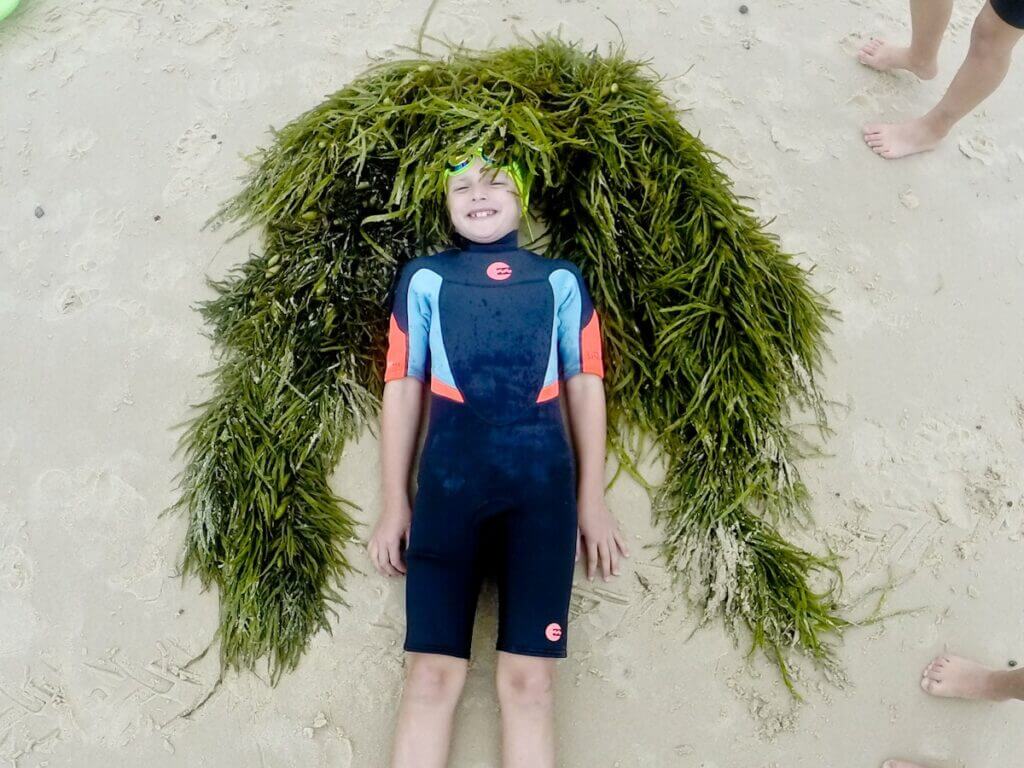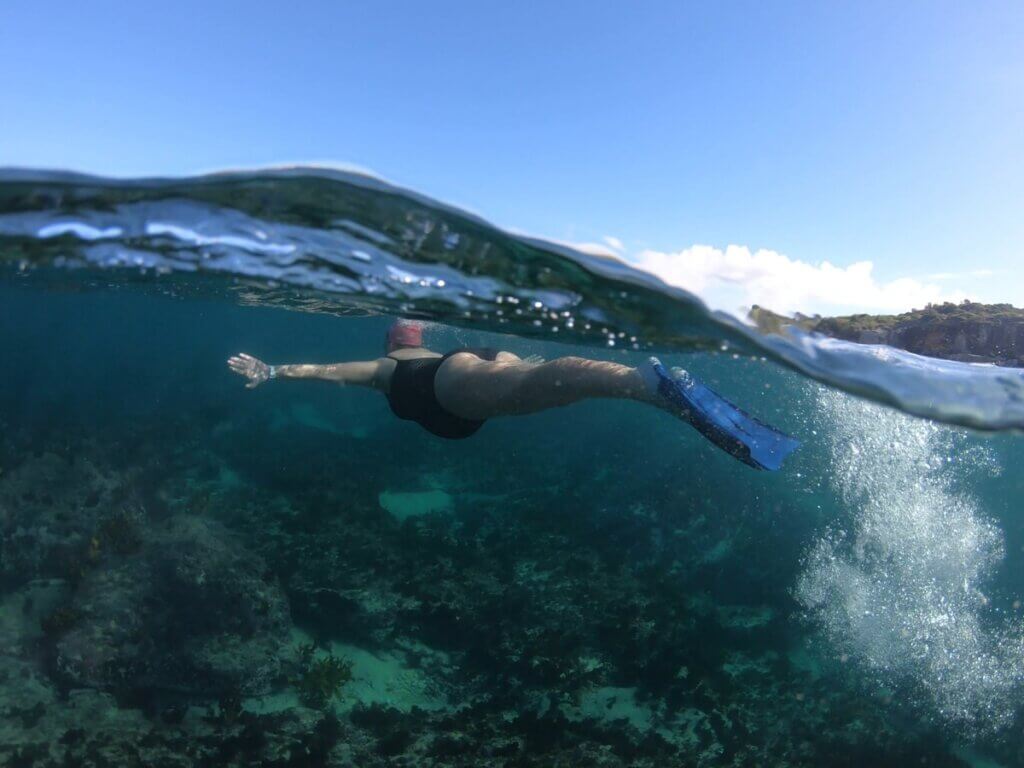Bluebottles: Better the devil you know

Bluebottles.
Just the name alone is enough to give your average swimmer the shivers!
I don’t get the hysteria around bluebottles, to be honest.
Yes, they’re annoying.
Yes, we’re best off avoiding them.
And, yes, some people are allergic and can have an adverse reaction to them (in which case they should take extra care, and the rest of this message should probably be ignored).
But, for most people most of the time, the sting is nothing more than a slap on the wrist.
I’ve always maintained that its the conjured-up fear in your own mind that makes an eventual encounter worse than it should be.
Read: Being hands-on beats the heebie jeebies
It’s like having an irrational fear of rip currents. As an ocean swimmer, you know that rips aren’t as dangerous as they’re made out to be. And similarly, bluebottles aren’t always as painful as they are demonised to be.
You learnt that rips aren’t so bad after you’d swum in one. And, for years in my practical teaching, I’ve sought to have participants stung by a bluebottle.
One of the most fun things to do in a lesson is to have participants pick up a bluebottle by the bladder (the float/sail-part that doesn’t sting) or stomp on them to create a popping sound. I believe safely getting closer to the things that frighten you is a great way to overcome your fear – better the devil you know!
If I’m going to have someone get stung on purpose, I first sting myself (on the calf). Some bluebottles tend to sting more than others, so if its a particularly nasty one, I’ll save the lesson for another time.
The tough, thicker skin on the palms of your hands and the soles of your feet helps facilitate these experiences, mostly preventing the microscopic venomous cnidocytes (stinging cells) on the tentacles from stinging you. This is why it’s ok to use your fingers to remove any tentacles from other parts of your body, if necessary.
After the initial shock has subsided following a sting, ensure all the tentacles have been removed, rinse off with sea water, then run under hot water. If there are any signs of breathing difficulties, an ambulance should be called by dialling 000.
Read: How to treat a bluebottle sting
The best thing about getting your first bluebottle sting, whether on purpose or when unexpected, is the realisation that it’s not as bad as you thought it would be.
I’m sure you won’t enjoy it, but the odds are in my favour that the pain won’t reach the overhyped heights you imagined it would.
Now, with a bluebottle sting in your playbook, the next time you’re swimming, you can be a little less anxious about meeting up with a bluebottle and a lot more relaxed if you do lose the battle with one.
Watch Andre deliver this as an Educational Musing on Facebook, Instagram, and TikTok, and follow OceanFit on social.






Responses